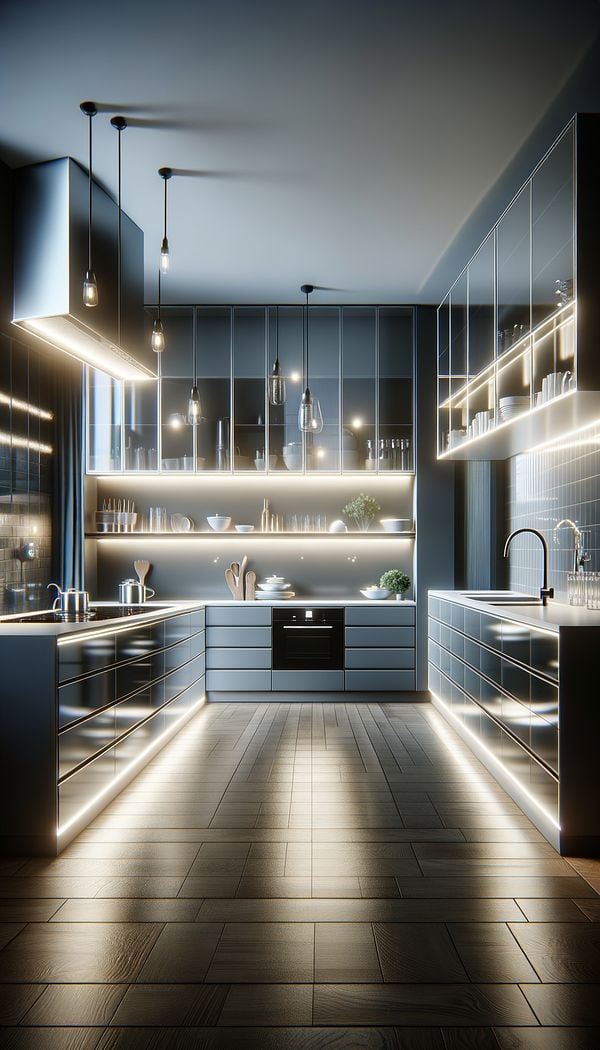What is Splashback?
A surface material installed behind a sink or stove to protect walls from splashes and stains.
Description
Splashback refers to a material used on the wall area behind sinks, stoves, or any other area prone to splashing, primarily in kitchens and bathrooms. The primary purpose of splashbacks is to protect the wall from water, grease, and other potential stains that occur during cooking, washing, or other activities. Splashbacks can vary greatly in material, design, and color, offering not only functional benefits but also contributing to the aesthetic appeal of a space.
Material options for splashbacks include tiles, glass, stainless steel, and more, each offering unique visual and practical advantages. Glass splashbacks, for example, provide a sleek, modern look and are easy to clean, while tiled splashbacks offer a range of design options through various colors, patterns, and textures. The choice of material often depends on the overall design style of the room, practical considerations, and personal preference.
Beyond their practical application, splashbacks can become a focal point in a room’s design, introducing color, texture, and pattern. This ability to blend functionality with style makes splashbacks an important element in kitchen and bathroom designs.
Usage
In a modern kitchen renovation, a glass splashback might be chosen for its clean lines and ability to reflect light, enhancing the overall brightness and feeling of space. Meanwhile, a traditional-style kitchen might feature a ceramic tile splashback with a decorative pattern to add character and charm. In bathrooms, splashbacks are commonly found above sinks or along the perimeter of a shower area, serving both a protective and decorative role.
FAQs
-
Can I install a splashback myself?
Yes, installing a splashback can be a DIY project, especially if you're working with peel-and-stick tiles or panels. However, some materials, like glass or large ceramic tiles, may require professional installation for the best results.
-
How do I clean my splashback?
The cleaning method for a splashback largely depends on the material. Glass and stainless steel splashbacks can often be wiped clean with a damp cloth and mild detergent. Tiled splashbacks may require special attention to grout lines, potentially using a grout cleaner for tougher stains.
-
Are splashbacks only used in kitchens and bathrooms?
While the most common use of splashbacks is in kitchens and bathrooms due to the higher likelihood of splashes, they can also be used in laundry rooms or any other areas where wall protection is desirable.
-
Can splashbacks be customized?
Absolutely. Splashbacks offer a wide range of customization options, including the choice of material, color, patterns, and even printed designs on glass splashbacks. This allows for a high degree of personalization to match any interior design theme.
Practical Application
When choosing a splashback, consider both the practical aspects of the material—such as durability and ease of cleaning—and how it fits into the overall design aesthetic of the room. It’s also advisable to think about the lighting in the area, as some materials, like glass, can beautifully enhance the light in a space. Make sure the splashback's style, color, and material complement other elements in the room, creating a cohesive and attractive design.
-
Decorating Principles & Elements330 articles
-
Kitchen & Bath37 articles
-
Materials & Textiles360 articles
-
Wall Treatments & Finishes157 articles
-
Counter StoolA counter stool is a tall, narrow chair designed for use at a kitchen counter or bar.
-
BackingBacking refers to the material or support layer behind the visible layer of a product.
-
EscutcheonAn escutcheon is a decorative or protective plate around a keyhole, door handle, light switch, or faucet.
-
Open PlanOpen plan refers to a floor layout without walls or barriers between different living spaces.
-
Curb AppealCurb appeal is the attractiveness of a property as viewed from the street.
